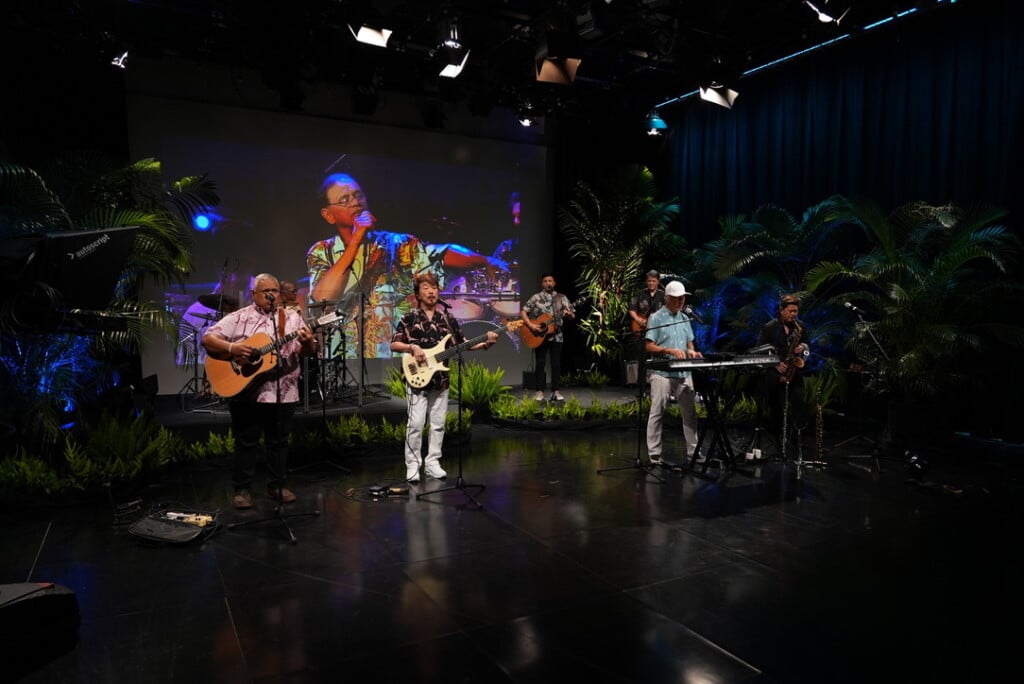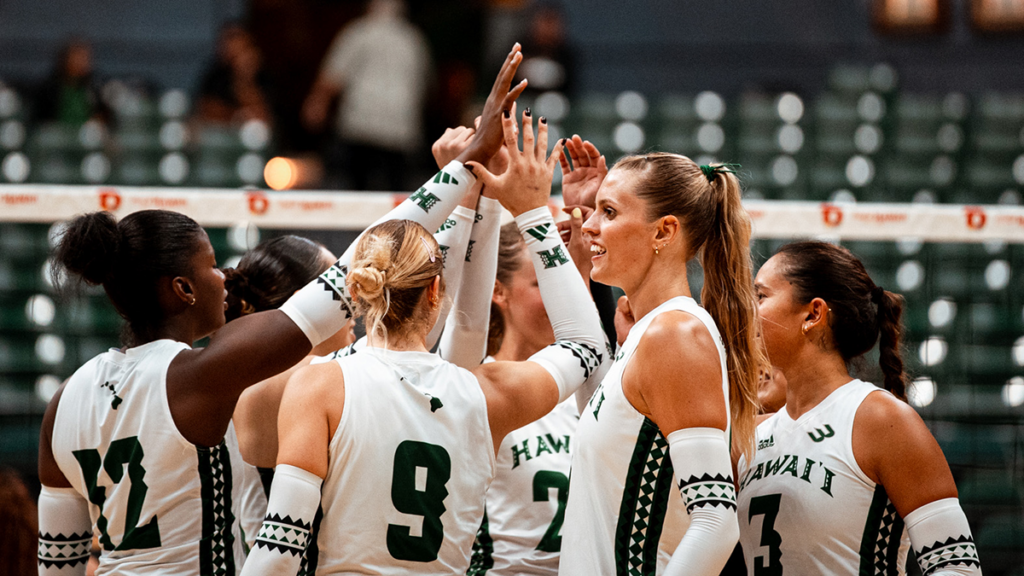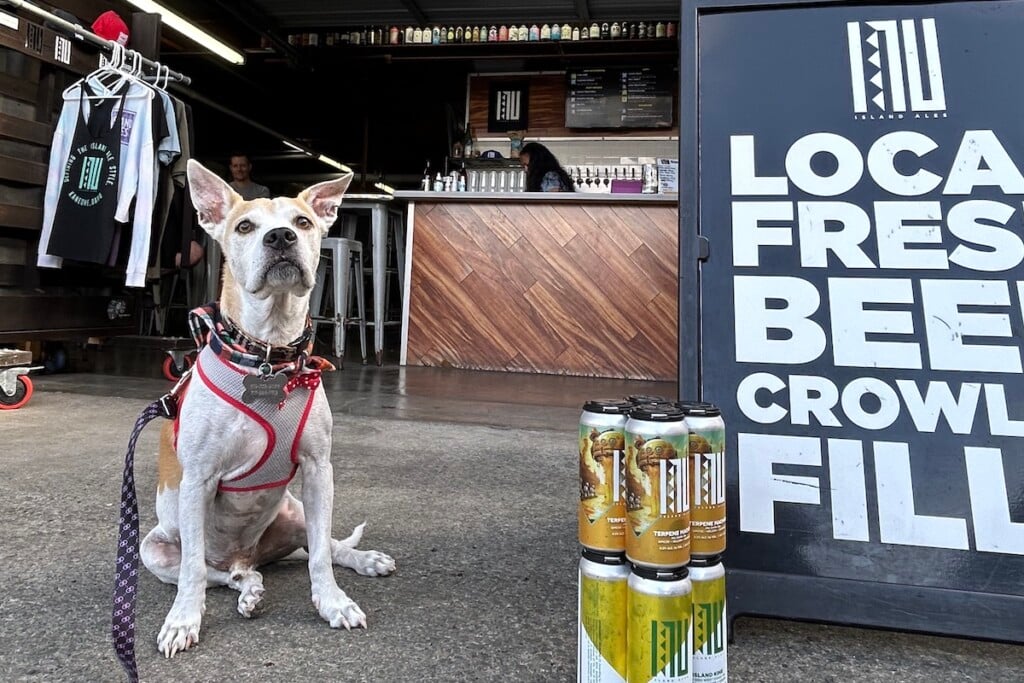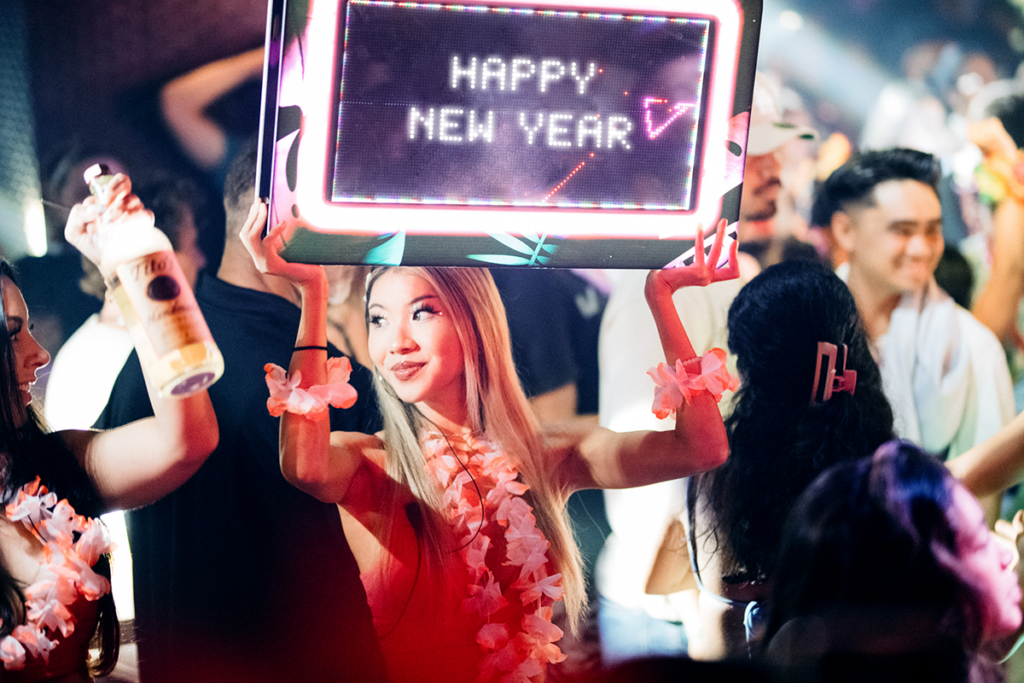Get Behind the Scenes of Filming PBS Hawai‘i’s Kākou: Hawai‘i’s Town Hall Program
The topic of the upcoming town hall on Aug. 28 is The Arts: Why We Need Them—in light of that, dive into the art of producing the program.

Photo: Courtesy of PBS Hawai‘i
Kākou: Hawai‘i’s Town Hall is a live, issues-based discussion show that PBS Hawai‘i produces and airs five times a year. Each episode focuses on a different topic of great concern to the community. Over 90 minutes, ten to twelve panelists discuss the issue in our studio, moderated by host/co-producer Yunji de Nies. Viewer questions, sent via phone, email, and social media, are integrated into the discussion. By the end, the panel and viewers arrive at a greater, more informed understanding of the issue. There is no expectation that specific solutions to problems will arise from the conversation, but common-ground approaches often are.
The subject of the upcoming Kākou is The Arts: Why We Need Them (Thursday, Aug. 28, 7:30 p.m.) In light of this topic, we’d like to pull back the curtain and reveal the art of producing an episode of Kākou.

Photo: Courtesy of PBS Hawai‘i
To the viewer, it might look like we simply place a dozen people and our host in the studio and let it all just happen. But there is a lot more to the process, which starts several weeks before the broadcast, as soon as the topic has been selected.
First, “casting” the panelists. “Executive producer Chuck Parker, our host Yunji and I get together and brainstorm about possible guests,” says co-producer of the upcoming episode Anna Gomes. “We want to make sure we have a diverse panel who can chime in on different aspects of the topic.”
According to de Nies,“The approach is to bring as many perspectives as possible into one room and to have an honest and compelling exchange of ideas.”
Once the preliminary guest list is set, usually with more than a dozen names to account for those who aren’t able to attend, invitations are sent out, and the “cast” is finalized based on who is willing and able to participate.
On the day of the broadcast, before the show goes live, the panelists are given an opportunity to bond. “A lot of them arrive early,” notes Gomes, “because they’re just concerned and they don’t want to be late. So there’s a period before the show where they can meet each other. And I think that’s helpful in a lot of ways because then they feel a bit more comfortable.”

Photo: Courtesy of PBS Hawai‘i
Once the show starts, de Nies sets up the topic by reading a scripted introduction to camera—one of the few pre-written moments in the show. The next order of business, she says, is “to make sure that the audience knows who each panelist is and what perspective they are bringing to the conversation. In the first round of questions, I usually say the person’s name, the organization or group they are representing, then ask a question. That way it feels conversational, and I give the audience a chance to hear from each person right away. It gives us a nice grounding and flow.”
One of the greatest challenges of moderating a 90-minute discussion between ten to twelve people is to make sure each one has a close to equal participation. To achieve this balance, de Nies tries to keep “a loose tally of how many times I’ve heard from each guest. I want to make sure we hear from as many people as possible. I try to spread out the questions so that all of the panelists who have given us their time feel like their voices are being heard.”
The true art of Kākou comes not just from the voicing of the individual perspectives, but also the impact one panelist’s viewpoint has on the others. “Many of the panelists don’t know each other,” says Gomes. “So for them, hearing someone else’s perspective does maybe open their eyes to something they never thought of before because they don’t live it. That’s where the Kākou part [we’re all in this together] comes in.”

Photo: Courtesy of PBS Hawai‘i
Add the viewer questions into the mix, and the interaction between different viewpoints multiplies exponentially. “Viewer questions are essential,” says de Nies. “It’s wonderful how I get to see the questions they are asking almost in real time because our producers turn them around and get them to me so quickly. It makes the experience so organic, unpredictable and fun!”
The unpredictable nature of the show may be fun for de Nies, but it can present a daunting challenge for the live director of the broadcast. With five cameras at play and the chance that any of the twelve panelists can start speaking at any time, how does the director manage to get a single shot of the person speaking?

Photo: Courtesy of PBS Hawai‘i
Rianne Tsutsui, who has directed several episodes of Kākou, says “I tell our jib [or crane] operator to always stay wide so that it has all of the guests and sometimes even Yunji in the shot. Then I can see who is speaking and, while staying on the jib’s wide shot, I can direct another camera operator to get a single shot of the speaker, then take to that shot when it’s ready.”
This live, on-the-fly problem solving makes the 90-minute show zip by for the production crew, even with bumps along the way. “If you make a mistake,” says Tsutsui, “you have to move on very quickly. You cannot dwell on any mistakes. It’s just go, go, go, go, go. So it’s always very exciting for me.”

Photo: Courtesy of PBS Hawai‘i
It’s also exciting for the PBS Hawai‘i production team because they know that over the course of the live show, they are providing an essential service to their fellow island residents.
“It’s often said that Hawai‘i is one big, small town,” says de Nies. “We need to figure out how to tackle big problems together. The best way to make that happen is through communication. This format allows us to bring together a diverse group of voices, throughout our community, to take on some of those issues. We may not reach a solution, but having those conversations and understanding why others may have a different view, is vital.”
More than just creating a pretty picture, art can often be the creative endeavors that allow us to speak to our community.
Kākou: Hawai‘i’s Town Hall – The Arts: Why We Need Them
Thursday, Aug. 28, 7:30 p.m.
Broadcast and streaming on pbshawaii.org and YouTube
SEE ALSO: In Hawaiian Hands: The Story of Reggae in Hawai‘i – Part II: Jawaii Examines Jawaiian Music
 Every month, HONOLULU publishes a blog written by the folks at PBS Hawai‘i, the only locally owned, statewide television station in Hawai‘i that receives support mainly through donations. Visit pbshawaii.org to learn more about exceptional, locally produced shows and the most prominent provider of educational and national programming. Explore music and the arts, discover in-depth documentaries and learn what makes Hawai‘i so special. Follow PBS Hawai‘i on all platforms: @pbshawaii
Every month, HONOLULU publishes a blog written by the folks at PBS Hawai‘i, the only locally owned, statewide television station in Hawai‘i that receives support mainly through donations. Visit pbshawaii.org to learn more about exceptional, locally produced shows and the most prominent provider of educational and national programming. Explore music and the arts, discover in-depth documentaries and learn what makes Hawai‘i so special. Follow PBS Hawai‘i on all platforms: @pbshawaii











